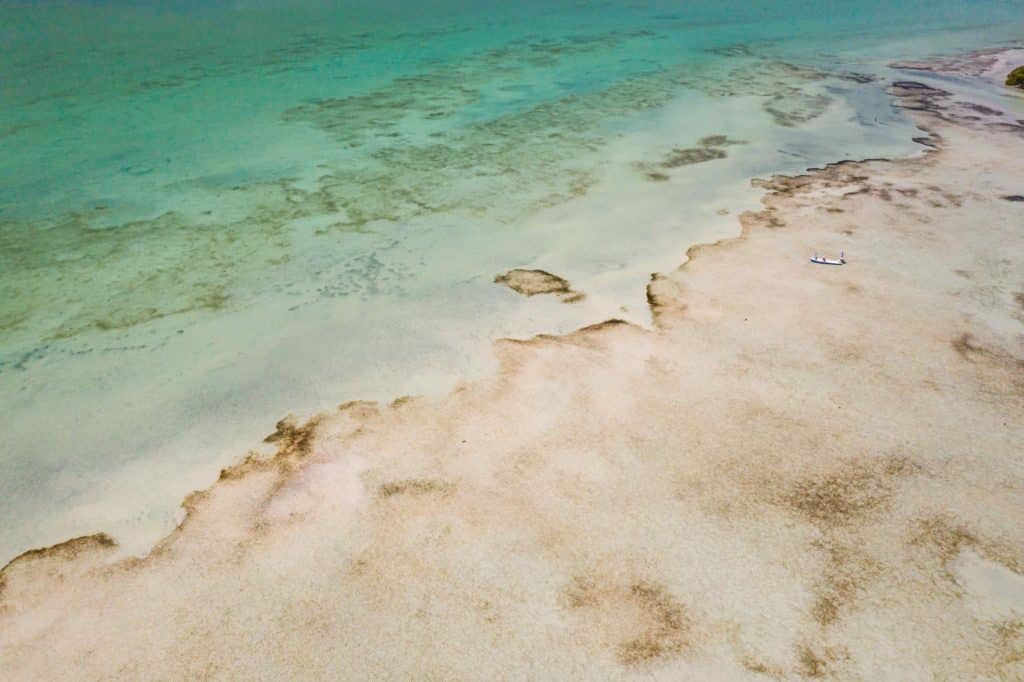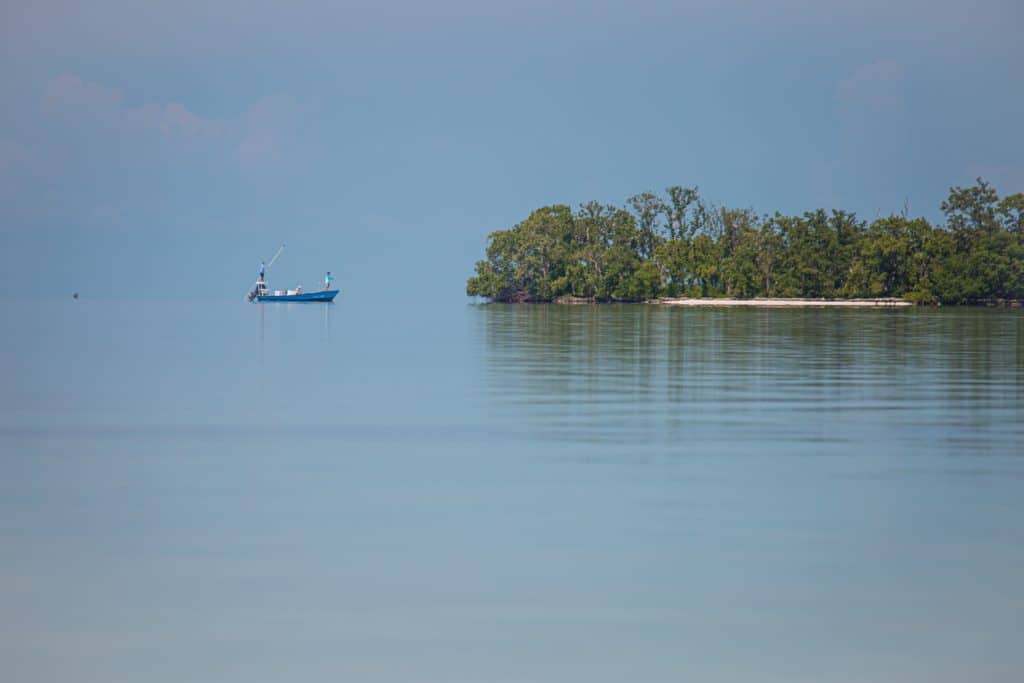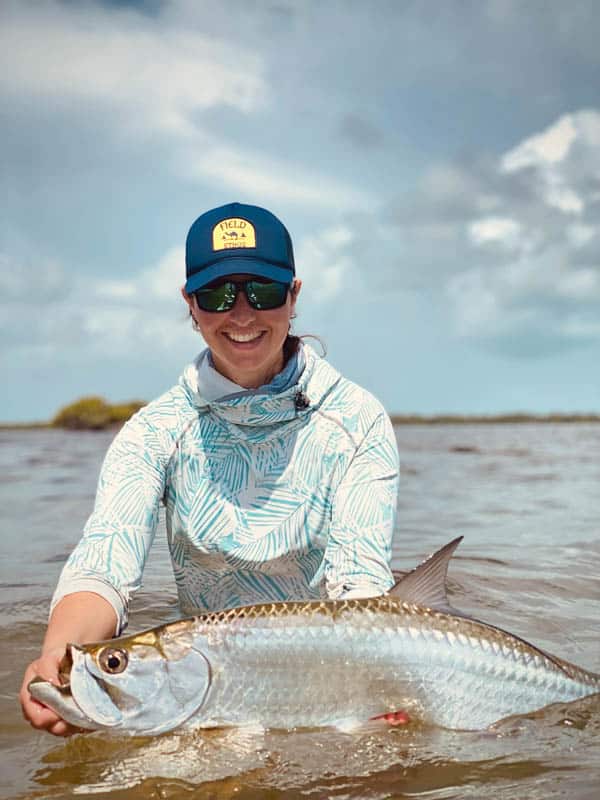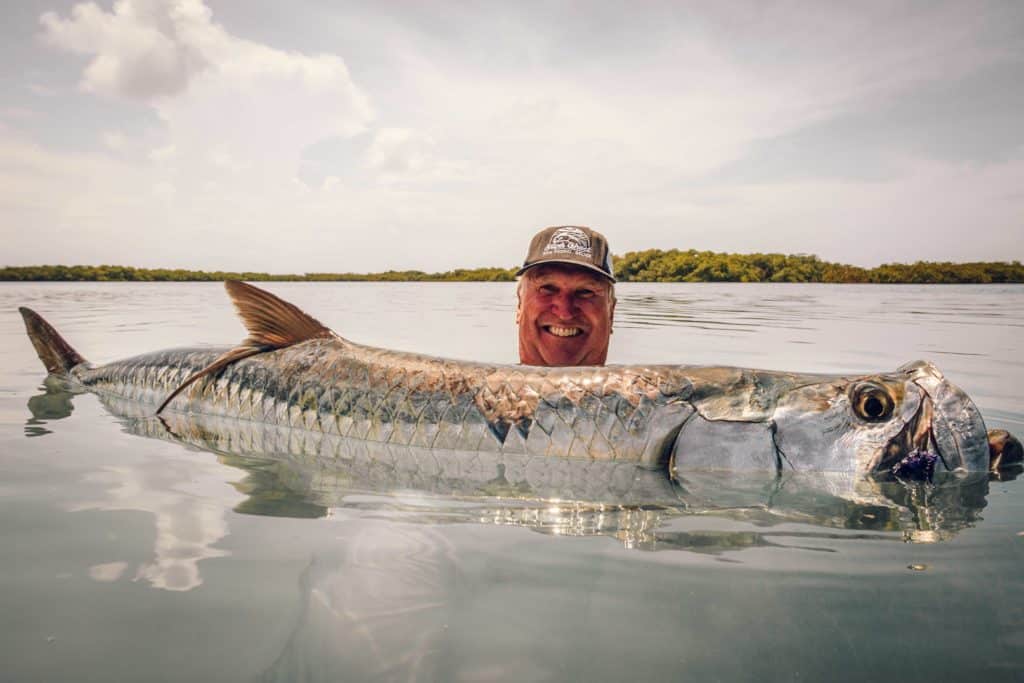
Here’s the thing about being a fishing photographer: You’ll spend countless hours on the water and days hanging at lodges you’d never be able to afford otherwise. You’ll fly to places you’d never have put on your travel list if it wasn’t home to a particular species that exists in that one location, or a stretch of water that could become “the next big thing.” You’ll meet awesome anglers from around the world, and you’ll be able to communicate in the shared language of fishing even if you don’t speak the same native tongue.
You’ll also fish less than you ever have in your life.
So, when a saltwater tournament in Belize that I’d been entered into fell through, fishing friend Robert and I decided to just meet up and fish anyway. We both were regular fixtures at El Pescador Lodge on Ambergris Caye—me as a photographer and occasional lodge fishing director, Robert as a guest. We decided to meet up for a week in July, keen to simply get some down time in the boat and chase a few permit and tarpon around.
Day-Off Tarpon in Belize

Teamed up with guide Gordy, we went on the hunt … and started strong. By 8:30 on the first morning, Robert and I both had permit to hand. We were laughing about how if the tournament had happened, we’d have been serious contenders. In the days to follow, we had a mixed bag of weather and commensurate luck. (As the saying goes, they call it fishing, not catching, right?)
Midway through the week, it was my turn up on the bow again. I’d tied a chartreuse and white tarpon toad onto the 10-weight, one of the fleet of toads I’d tied up over a very long Montana winter back home. I’m by no means a prolific fly tyer, but there still seems to be that point in every winter where the vise comes off the shelf and the materials drawer gets opened. I put on a good movie, and arts-and-crafts time commences. Usually with a saltwater destination in mind.
Tarpon in the Mangroves
A few tarpon were rolling intermittently along the mangroves, and it was time to pitch the fly into action. I was hopeful; chartreuse and white is one of my favorite combinations. A mid-size fish swiped, missing. Another cast. Strip, strip … this time, he didn’t miss. It wasn’t a fish to write home about, but a tarpon is still a tarpon. He jumped, scales glinting silver and champagne in the warm tropic light. Gordy hooted from the platform, laughing as the fish ran.
Mid-sized tarpon are far more fun than their larger brethren, or at least I think so. The big girls are wonderful to photograph and to finally hold—what angler hasn’t dreamed of catching a fish that weighs the same as we do? But they’re a lot of work. Often hours of it.
So, give me happy tarpon in that 25- to 45-pound range. They usually jump more than the larger migratory fish and can be landed in a fraction of the time. Plus, they’re just plain old fun to fish for, land, and hold. Fishing is supposed to be fun, something many of us seem to have forgotten in this day and age of “Insta-famous” and “the ‘Gram.” If we’re not having fun out there, what’s the point?
Tarpon Landed!

The tarpon came to hand in textbook fashion—after a couple acrobatic jumps and two nice runs, he was leadered. I jumped into the warm Caribbean water, wanting to get a good look at him. For once the photographer was the one holding the fish, not the one jockeying around in the water or the boat, looking for the angle.
Robert and Gordy snapped a few quick images and then I let him go, off to swim again and hopefully grow into a bruiser of a silver king one day. I sank into the bathtub-warm water and watched him swim off across the flat, immensely grateful for a trip where I was able to trade the camera for the fly rod and get to participate in the activity I’ve chosen to base a career around.
It was fun. Grin-like-a-little-kid fun. And a timely reminder that I should put the camera down, set work aside, and fish more often.










